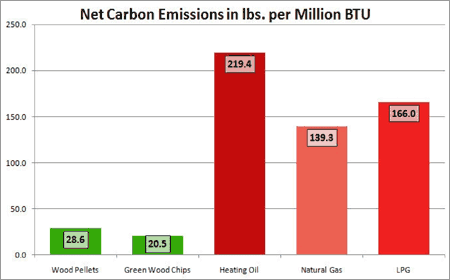
Image Credit: Revision Heat
Image Credit: Revision Heat Fuel cost per million Btu comparison
Image Credit: Revision Heat Pellets are delivered to a home by truck. A vacuum system fills a hopper inside the house via an anti-static line hose.
Image Credit: Revision Heat Fabric pellet hopper with auger-fed system
Image Credit: Okofen UAS For remote installations, a vacuum system can transport pellets from the hopper to the boiler.
Image Credit: Okofen USA
For Part Three of this Green Architects’ Lounge episode, we are joined once again by our good friend Pat Coon, from Revision Heat, to discuss the topic of biomass boilers. We complete the trilogy with a succinct discussion on cost and tax incentives (unfortunately, $1,500 is all you’ll get from the U.S.). This is after Phil shares his “Hot Zigg!” (our expression for a good idea). Phil just wants a consistent wood pellet rating system. Is that too much to ask?
Then I share my six-digit idea of “preinsulated PEX tubing” with Phil and Pat, to see if they think I’m crazy. Finally, I have the pleasure of introducing you to the music of Pete Miller, with his song “Daydreamer.” Enjoy.
OFFICIAL TRANSCRIPT
Phil Kaplan: OK, this brings me to my Hot Zigg.
Chris Briley: Are we ready?
Phil: But I want to come back in a little bit and talk about incentives and tax credits—get some numbers if possible.
Chris: But let’s hear your Hot Zigg. Whaddya got?
Phil: Well, I have a pellet stove. Granted, it’s not a pellet boiler, but one of the things I came up against is trying to figure out which pellets I’m going to buy. There was an availability issue, yes—but there were also other things, one being there’s no rating system on the pellets. Every bag says “high-quality pellets.” Sure. Wonderful. So, you get the cheapest ones you can find. But there is a large variation in the quality of pellets.
Pat Coon: And within one brand, you can get a batch that’s…well, they’re getting wood from all different places.
Phil: Well, that’s my question. What I really looked for and didn’t find was somebody to rate pellets.
Pat: Yeah, you’re not going to find it…
Phil: If there was a way to control the quality of pellets, don’t you think that would [unintelligible] the marketplace?
Pat: Well, it exists. The Maine Pellet Fuels Association? There’s a standard, and they measure a whole bunch of things. Everything they tell us is that the pellets coming through the industry have the right amount of ash content, the right melting point—it’s all been tested. But we still hear back from customers—not so much with the pellet boilers but with the pellet stoves—“Oh, I like this” or “I didn’t like this”; “I like dark ones” or “I like light ones.” Honestly, when it comes to boilers, if you’ve got a good boiler, however it’s designed—if it’s manual, easy to clean, can deal with clinkers, can deal with the ash; if it’s automatic, it can deal with clinkers and it can deal with ash—it shouldn’t matter. And it hasn’t. But if the boiler’s not robust, and you throw it crappy pellets, you’re going to have problems. Dusty pellets are another problem as well for the boilers. They don’t like too much sawdust, so that becomes a distribution issue.
Phil: OK, a couple questions here. Straight numbers…
Pat: Can I go back to wood boilers?
Chris: Let’s do both. You got the gasification log boiler…
Pat: Gasification log boiler with no thermal storage: You’re not going to spend less than five grand for it. That’s your baseline for buying an Eastern European boiler. And a couple thousand dollars to install it. A better boiler’s going to cost $7,000; fully installed, $10,000. Add thermal storage, and you add $5,000 to $8,000.
Phil: …which is optional…?
Pat: Yeah, a lot of our clients start without and add a couple years down the line. So, anywhere from $5,000 to $6,000, up to $22,000, depending on with storage or without.
Phil: And that’s wood?
Pat: Yes, wood.
Chris: And am I saving versus oil? If I get a wood boiler and I get an oil boiler—on the one hand, I’m buying oil, and on the other I’m buying wood. If I’m doing wood, we’ve already decided that’s greener, especially here in Maine. That may not be true in every instance, but am I coming out ahead financially?
Pat: Yeah. The dollars for the fuel—there’s a huge savings. A cord of wood burned in a high-efficiency wood boiler delivers the same amount of energy as 150 gallons of oil. So, if oil is $3 a gallon, that was $450 worth of fuel that you bought for $200. Oil would have to be $1.25 a gallon to break even. But the equipment’s expensive, so it comes down to…
Chris: Return on investment?
Pat: Yeah. Do you like cutting wood? Will you cut some of it yourself? The biggest savings we see is when our clients buy just the wood boiler without the thermal storage and spend nine grand—and they’re cutting eight cords of their own wood a year, and they’re saving. Those people have huge returns.
Chris: And biceps, too. So, then, contrast that with the pellet boiler.
Pat: We’re hoping with the next wave of pellet boilers, we’ll be able to install one for about $15,000. That’s with the hopper, fully automated—it’s going to be as efficient as the oil boiler that’s there. Your standard oil boiler is about 80% efficient. The high-efficiency, really nice, slick European—$20,000 plus, fully installed. There’s less expensive options, too. A bag-fed boiler—a nice, efficient one—might install for $8,000 or $9,000.
Chris: If I were your client, would I have a service agreement and a delivery agreement? Some people might be skeptical: “Hey, pellets are here now because this guy’s trying out this brand-new company with its brand-new idea of fancy pellets, and we’re all going to switch to pellets.” Or, “Maybe only five people switch, and this pellet delivery system goes away, and now I’m going to have to schlep bags of pellets from Oklahoma or Canada.”
Pat: Well, there’s always going to be pellets in Maine because we have a huge stove industry. In Maine we have three pellet delivery trucks, pneumatic. Worst-case scenario, those all go under, and then you’re schlepping pellet bags. But when you look at the demographics, pellets right now are a fuel that costs 25% less than oil. They’re as reliable and as automated, almost, as oil. The spread between pellets and oil is only going to get bigger as we deplete our oil. Is that going to be five years, eight years, two years? I don’t know.
Phil: But we know it’s going in that direction.
Pat: When your oil boiler dies, you can put in another oil boiler and pay twice as much for the fuel, or you can put in a pellet boiler and pay half as much for the fuel. Which are you going to do?
Chris: And if there’s a run on pellets? Because the oil just spiked, and you’re a rich man hiring kids left and right to deliver this stuff…
Phil: Can you make your own pellets?
Pat: Yeah, the technology scales way down, actually. I know people who have little pellet mills in their barns. Little machines—you pour sawdust in, and pellets come out. Some, you pour wood chips in, and pellets come out.
Chris: Or leaves! And with that, you got anything you want to add, Phil?
Pat: Wait, wasn’t there a six-digit idea?
Chris: Oh yeah, I did have a six-digit idea.
Phil: Just one more thing—are there any tax credits or incentives?
Pat: Yeah, $1,500, same as the on-demand water heater and insulation credit.
Chris: Can I get the 30% that goes with renewables, solar, and all that?
Pat: No. The kind of people who wrote it must have been the “sexy greens,” not the “crunchy greens.” I don’t think there are many “crunchy greens” in the halls of power, and that, my friend, is a problem.
Chris: We need more hippies.
Pat: Come on, hippies — run for office.
Chris: OK, so the six-digit idea. I think this will revolutionize the market if I’m “on.” If I’m “off…” Preinsulated PEX tubing. That’s the idea. What’s the most frustrating LEED credit?
Phil: R-4 for your insulated pipes. How do you do it? There’s nothing you can lay on top.
Chris: Right. You say to the builder, “Can’t you insulate?” And he says, “Well, I can drill 3-inch holes through your 3½-inch studs. How do you like that?” Can’t you just place it on afterwards? “Yeah, it’ll cost thousands of dollars to trace this thing through walls—especially since we’re doing PEX now.” My kids had these sponge toys, and I could shrink this baseball-size sponge down into this minuscule little thing. Imagine having PEX—as it rolls off, it’s got this squishable foam on it in a little wrapper. So you thread this thing through, you plumb like you normally plumb, you cut it away as you’re making the fittings—and when you’re done, grab the little tab, and zip! It puffs out where it’s supposed to be.
Phil: But you still need room for it to expand.
Chris: Which you should have in the cavity, but now you’re not doing 3-inch holes through the stuff; you’re still doing the standard ¾-inch holes. So, now, this could roll off—100 feet of this stuff—and you just zip the roll and you’re done.
Pat: For solar hot water we run ½-inch or ¾-inch copper, and if we have to go against the studs, we pull tubing and then go back and put the insulation on. But they do make line set, which is preinsulated copper tubing.
Chris: But it’s thicker.
Pat: No, it’s not that thick. But if you have to go through the studs, you’re right, you’d have to drill a bigger hole. But we drill the small holes and just go clip, clip, clip.
Phil: Nice try. Pat’s trying to get you five digits. OK, I’ll allow it; I’m intrigued. I’d certainly spec it.
Pat: We’d try it out.
Chris: Especially if you could make it of all green, recyclable stuff—well, yay. All right, that wraps up our episode.
(The guys shoot the breeze about the success of Green Drinks in Portland and local musician Pete Miller.)
Weekly Newsletter
Get building science and energy efficiency advice, plus special offers, in your inbox.





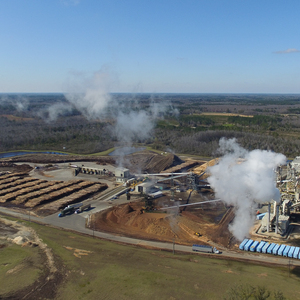
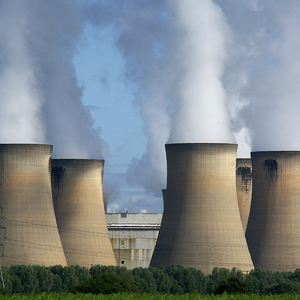
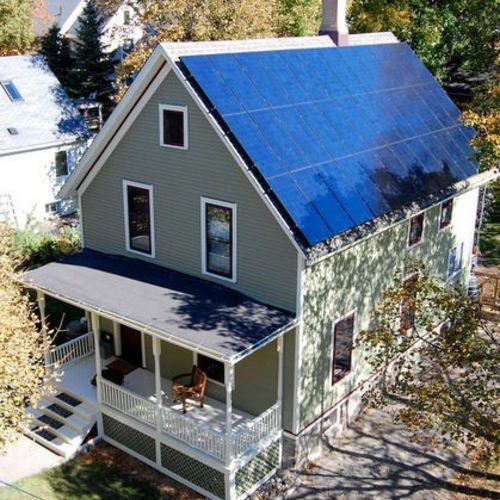
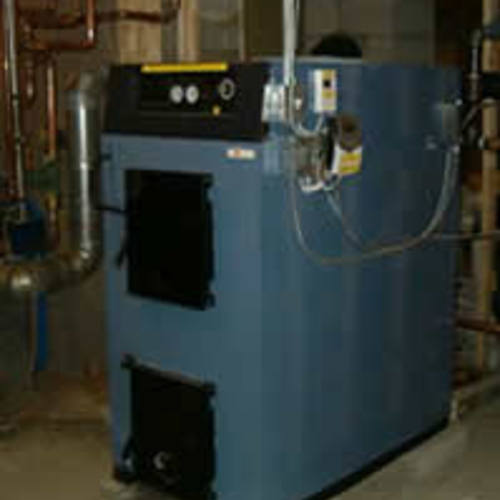






3 Comments
Love the PEX idea
It's a little known fact that PEX can be used in atmospheric pressure drainback solar systems. Installers of those systems would also love that product. For them, it needs to be UV resistant or paintable if possible. (PEX can't be used within 5' of the collector itself because of heat conduction.)
But I still hate any pellet-burning device for new green construction that has grid access. An air-to-air heat pump is the answer for almost any reasonably-sized and highly insulated residence.
Architects should make sure it gets crossed off their clients' green wish-lists very early on.
Wood boilers LCCA pls Chart bias?
Great read. My wife owns a retired farm in Vermont with an outside boiler that we considered replacing due to the lack of 'turn-down' and issues with storing 8-10 cords nearby -- not to mention feeding the darn thing in a blizzard. I did some extensive research and ended up writing a technical report that includes a simplified life cycle cost analysis for a wood burning outdoor unit vs indoor pellet. If anyone is interested, it can be found here: http://www.scribd.com/doc/38900983
Chris/Phil: I am curious as to how you arrived at your chart data that shows wood & pellets to emit far less total NET carbon emissions then other fuels. What do those numbers include? How granular did the analysis go? AKA -- if we use trucks and huge logging equipment to harvest wood (using gas & oil) and pellet plants require huge drying furnaces (consuming more energy either kWh) -- would the graph seem less drastic?
Obviously, if you harvest wood by hand (or small saw) locally on-site, chop it up on your own property, dry it naturally for 1-3 years and then burn it efficiently (gasification with storage) -- you'll have a much smaller foot print then any other fuel out there simply because it requires the least amount of additional energy, transportation and processing.
I too love the PEX idea.
Chart from Revision
Hi Josh,
Your points are good ones. I got the chart from Pat so I'm afraid I can't comment on the depth of the science behind it. I'll give Pat a call and see if he can comment on your comment. I was going to read your article and give you my two cents, but it looks quite in depth and I'll have to block out a bit of time to do it. I'll definitely check it out. THANKS.
You know this insulated Pex idea is getting great feedback (no negatives yet!) Maybe, someone will actually run with it, one day. That'd be cool.
Chris
Log in or create an account to post a comment.
Sign up Log in